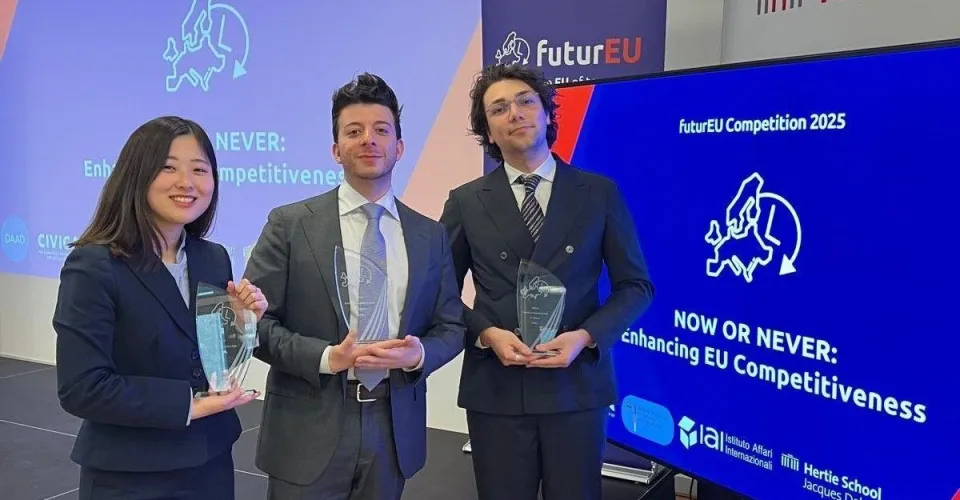
Bridging the EU’s Innovation Gap
A strong policy proposal to enhance Europe’s competitiveness through investing in university centered technology hubs earned the winning spot in the 2025 futurEu Competition for Bocconi students Leonardo Gallo and Italo Parrilli, together with Sakurako Maki of Sciences Po.
The competition is open to all students and researchers of the schools of the CIVICA alliance, of which Bocconi is a founding member, and is organized by the futurEU Initiative, founded in 2019 by master's students of the Hertie School, with the support of the CIVICA alliance, the Jacques Delors Centre Berlin, and the Hertie School. It invites students to develop policy proposals to face the EU’s main challenges – from immigration to sustainability, from digital transformation to democracy.
Here the 3 students talk through their winning experience:
“Our proposal focuses on the potential of university centered technology hubs to turn academic breakthroughs into scalable start ups and market applicable technology. Drawing inspiration from successful models like Silicon Valley, we explored how Europe could enhance its competitiveness - particularly in competence with other global leaders such as the U.S. and China - through better integration between research and commercialization.
Furthermore, under the current geopolitical context, we thought that strengthening the EU competitiveness through technology breakthrough and scaling them up with university centered start-up hubs would be the solution to ensure the competitiveness and also realizing the more cohesion fund allocation across EU.
We first identified the flaw in the current fund allocation scheme in the EU and found out potential cause of obstacles of scaling up the startups in EU. For example, despite a modest 0.6% improvement in innovation performance between 2023 and 2024, systemic barriers continue to impede effective technology transfer. The ambitious goals for 2030 set by the European Commission remain unreachable, lacking a dedicated policy to bridge this gap. This gap is our main focus and the challenge we tackled through our policy brief.
During the development of our policy brief, we encountered some challenges, namely designing a concrete and feasible roadmap of the funding scheme. However, by gaining insights from current innovation funding such as the European Innovation Council (EIC) and incorporating the measurable evaluation system for the funded projects, we ended up dividing the entire program in three stages based on the program’s timeline.
Participating the futurEU competition and having the discussion with the other teams from across the Europe was truly a great experience. With the strong belief in technology innovation and scaling up of them from an early stage, we look forward to seeing how ideas like ours can contribute to shaping the future of European competitiveness.”